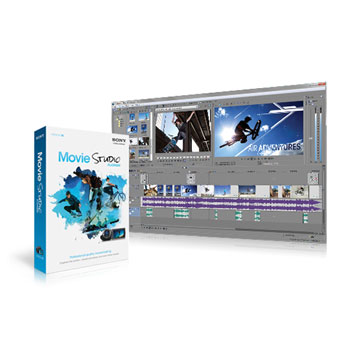
This is why I'm totally recommending this upgrade to anyone on a 64-bit version of windows - it's a small price to pay for the performance and stability gains. Sony made their consumer level product 64-bit and I speculate that this is the main reason that I can render fine in version 12 of Movie Studio. It also means that when that 32-bit program reaches the limit of the memory it is allowed to use, but it really needs more, strange things can happen and often these resulted in render errors. That's OK but it means that the 32-bit program can't use all the memory that you've installed. In previous versions of Movie Studio we were running 32-bit programs often on a 64-bit OS. Why is 64-bit such a big deal? Most modern versions of Windows are 64-bit and without this feature they are severely limited in the amount of memory they can use. There are two big changes in my mind: first they dropped 'Vegas' from the name and second, this consumer level software went 64-bit. It was amiss of me not mention that I upgraded to Sony Movie Studio Platinum 12 in the summer of 2012 and that it was the first rev of the software I got to render complex projects cleanly without having to hack all those dll files. Whereas version 10 managed to play four simultaneous AVCHD streams on our Core i7-870 test PC, version 11 managed seven when running on Windows 7 64-bit.A couple of the most read posts I have on this site have to do with overcoming render issues many of us had with Sony Vegas Movie Studio. It's now available as a 64-bit application, and the benefit to preview performance is dramatic. The improvements might not make for great marketing material but they're extremely valuable. Sony has mysteriously dropped the Vegas brand for this latest update, and the website has no mention on new features. This kind of control is frustratingly rare among consumer editors, and it's typical of the way Movie Studio puts the user firmly in the driving seat. For most projects, you'll want the software to automatically make space or close gaps when a clip is adjusted, but there are times when they should stay put – when editing in time to music, for example.


Its comprehensive ripple-editing options let users control how clips react when others on the timeline are moved or truncated. Movie Studio's fast, precise timeline controls are, as always, its greatest strength


 0 kommentar(er)
0 kommentar(er)
